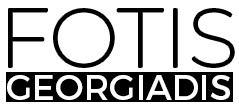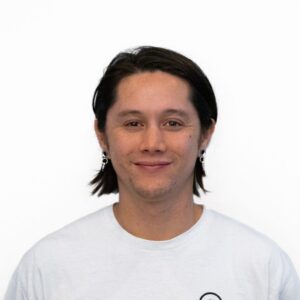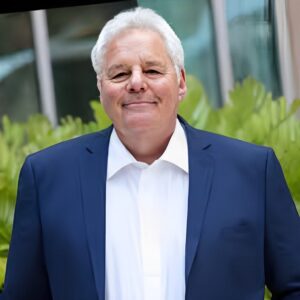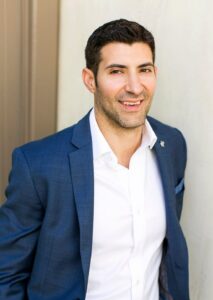An Interview With Fotis Georgiadis
Be authentic. This is especially true in telling your story and we’ve found the best way to be successful is by managing our own communications — on social media, our website and in our newsletter.
As a part of our series called “Making Something From Nothing”, I had the pleasure of interviewing Ellen Leake.
Ellen is the co-founder of Splinter Creek, a privately-owned residential community located in Taylor, MS. Originally purchased as a timber investment, the untouched beauty and character of property was later discovered, and the founding family exchanged their initial plans for those that include exploring the forests and lakes of Splinter Creek and recharging with community neighbors. Designed by a handful of creative partners, including New York’s Lang Architecture and Texas’ Lake Flato, Splinter Creek aims to be a model of environmentally sensitive and sustainable living. Encouraging residents to build lightly on the land, the property features spacious lakeside homesites that blend seamlessly into nearly 650 acres of rolling pine forest, lakes, and wetlands.
Thank you so much for doing this with us! Before we dive in, our readers would love to learn a bit more about you. Can you tell us a bit about your “childhood backstory”?
We are accidental developers. We never intended to set out on this journey, but it all started when my husband bought several parcels for timber investments in the mid-90s. He kept telling me how beautiful this land was in Lafayette County, just outside of Oxford, Mississippi. Splinter Creek was the old timber track name, and it comes from the name of a small, extinct town founded in the 1800s that was near the property.
My husband and I are both from north Mississippi, so I went for a look at our Splinter Creek tract one day. The land has beautiful ridges, valleys, hardwood forests, and well, he was right! Shortly after, we began to dream about our own future house on the land. Water has a magnetic pull for us, so we began by building a lake. One thing led to another and soon we were mud deep in 3 lakes and then building what we lovingly call the Boathouse in 2012. When it was finished, my husband commented, “all that’s missing now are neighbors” and so, the real vision of Splinter Creek began to take hold.
Can you please give us your favorite “Life Lesson Quote”? Can you share how that was relevant to you in your life?
Be open. That has been our life lesson and lagniappe on this journey. We learned to be open to opportunities that we could not have imagined when we began. We never set out to create Splinter Creek. It showed itself to us. We couldn’t have foreseen that it would become an intergenerational place where our girls and their families are investing and building. Nor a place where we get to see our grandkids on an ordinary day, which is wonderful for us since their primary homes are not close by. A willingness to embrace unplanned opportunities has been a gift to us and one we expect Splinter Creek will share with others, too.
Is there a particular book, podcast, or film that made a significant impact on you? Can you share a story or explain why it resonated with you so much?
Faulkner’s books have a way of describing the land itself as a character alongside the people in his stories. His characters dominate, but to me it’s more about the setting and layers around his description of place that resonates. Whether you are from Montana or California or Mississippi, there is beauty in the land and its natural state. This ethos impacted Splinter Creek in our desire for people to live lightly on the land. We take advantage of the land’s natural topography, letting the natural beauty of the landscape dictate a home’s design, rather than visa-versa, for example.
Ok super. Let’s now shift to the main part of our discussion. There is no shortage of good ideas out there. Many people have good ideas all the time. But people seem to struggle in taking a good idea and translating it into an actual business. Can you share a few ideas from your experience about how to overcome this challenge?
Splinter Creek, as an idea, really presented itself to us. The silver lining in 2020 was that people began to see themselves working and living in a different way, which really enhanced the vision we already had for the property. It was not until late 2020 that we saw a change in posture of our buyers which allowed us to take the reins of telling the story ourselves. We found that through this unique timing and set of circumstances, we could authentically tell our own story. From that, people really began to listen, and that’s when the business of Splinter Creek took off.
Often when people think of a new idea, they dismiss it saying someone else must have thought of it before. How would you recommend that someone go about researching whether or not their idea has already been created?
There are many real estate developments, but something that really sets us apart at Splinter Creek is that we celebrate modern architecture, and that’s not the norm in our area. But this, to some, was not always seen as a positive. I remember giving a tour to a real estate agent years ago, and I described our architectural guidelines. She said, “Oh, you are going to have to change this.” I thought to myself “no!” This is the essence of what we are trying to achieve. We know we are swimming upstream for our area, but we didn’t compromise. That’s served us well in the end. We’ve been dubbed in a few articles as “Mississippi modern,” and I think that fits.
For the benefit of our readers, can you outline the steps one has to go through, from when they think of the idea, until it finally lands in a customer’s hands? In particular, we’d love to hear about how to file a patent, how to source a good manufacturer, and how to find a retailer to distribute it.
Our model has evolved and got a boost when we took the business in house and began to do more ourselves. You must have a firm sense of where you’re going to be successful, but by the same token, you should be leaving yourselves open for serendipity, for chance encounters, and for opportunities you cannot imagine. You must be open-minded as you set out on a journey to build a business.
We love being a family business. My daughters are involved in the project, which I love, but beyond that, we have a lean staff and do a lot ourselves. This gives us an authenticity that is important to our story and it’s really what helped us leverage our business model.
Someone once told me, “You want to work with people who want to work with you.” When thinking about how to form a team, finding people that understand what we are trying to do has become a natural way to find partners of all sorts over the years.
What are your “5 Things I Wish Someone Told Me When I First Started Leading My Company” and why?
1. It’s more about the journey than the endpoint. We are in our 16th year, and part of that time we were building our own retreat. It’s been an incredible lesson in patience and learning that it’s about the long game.
2. Find your ‘people’. This goes with your internal team and that goes for buyers, too. I do some of the tours now, and people self-select. I never feel like I am selling Splinter Creek, I feel like I am introducing potential buyers to the concept and showing them the land and the homesites and talking about our lifestyle there. People get it or they don’t. It’s as important to us to build the right community as it is to have an uber-successful business model.
3. Do all you can to understand the costs. We are accidental developers, and we didn’t know what we didn’t know. We now know building lakes is very expensive. It was often difficult to peel back all the layers of expense, especially the cost of infrastructure.
4. Regulation will sometimes conflict with your vision. I wish I had understood more about the cost of regulations, but also in terms of the integrity of your project. For instance, we don’t want a curb and gutter or paved highway-like roads. That’s not aligned with our vision at all. But we’ve had to compromise a little and now we have a road surface to meet community regulations. It’s still beautiful, but not something in our original plan.
5. Be authentic. This is especially true in telling your story and we’ve found the best way to be successful is by managing our own communications — on social media, our website and in our newsletter.
Let’s imagine that a reader reading this interview has an idea for a product that they would like to invent. What are the first few steps that you would recommend that they take?
I would pick my creative partner first. That way, I could fast forward to define what success would look like, which is the real start of any endeavor. For us, that was our architects, but our partnership was more than that. They helped us get into a new mindset of “what if, let’s dream.”
There are many invention development consultants. Would you recommend that a person with a new idea hire such a consultant, or should they try to strike out on their own?
We first worked with Lake Flato, who helped us develop our master plan. We held a charette with them and a wonderful landscape architect, Ed Blake, to brainstorm about the overall layout of Splinter Creek, from lakes, to how we visualized living on the land, to necessary infrastructure. That planning was done before we committed to anything. As those “accidental developers” we talked about earlier, it was essential to have their expertise.
From there, we finished our own home, the Boathouse, which was also designed by Lake Flato. When we decided to expand Splinter Creek into the community it is today, we, fortunately, had already done the initial work around a master plan. As I look back today on the charette, what a wonderful creative experience. Some of the things we got wrong, but all-in-all, it formed the basis of a cohesive plan for what we’ve done these past 16 years. It served us well.
Ok. We are nearly done. Here are our final questions. How have you used your success to make the world a better place?
I don’t want to pretend that we’re doing any sort of earth-shattering work, but I will say that 2020 made us reorganize priorities: fresh air, long walks, enjoying small moments with family. Splinter Creek has allowed us to exercise that reprioritization with our own family and I’ve seen it with other families in the community as well.
You are an inspiration to a great many people. If you could inspire a movement that would bring the most amount of good to the most amount of people, what would that be? You never know what your idea can trigger.
I don’t know about an inspiration, but it seems like a simple vision where nature remains the star of the show is something we genuinely appreciate. It may have taken Covid to remind us of the importance of the great outdoors, which truly links back to life at Splinter Creek where we appreciate the routine, the long walks or hikes, bonfires with our kids, early morning fog, swimming in a lake, a dark sky, and meteor shower.
We are very blessed that some of the biggest names in Business, VC funding, Sports, and Entertainment read this column. Is there a person in the world, or in the US, with whom you would love to have a private breakfast or lunch, and why? He or she might just see this if we tag them.
John Muir. He was a naturalist, a preservationist, an ecological thinker, and a man ahead of his time. I would love to listen to what events shaped his views. Are there timeless lessons?
Thank you for these fantastic insights. We greatly appreciate the time you spent on this.
Making Something From Nothing: Ellen Leake Of Splinter Creek On How To Go From Idea To Launch was originally published in Authority Magazine on Medium, where people are continuing the conversation by highlighting and responding to this story.



